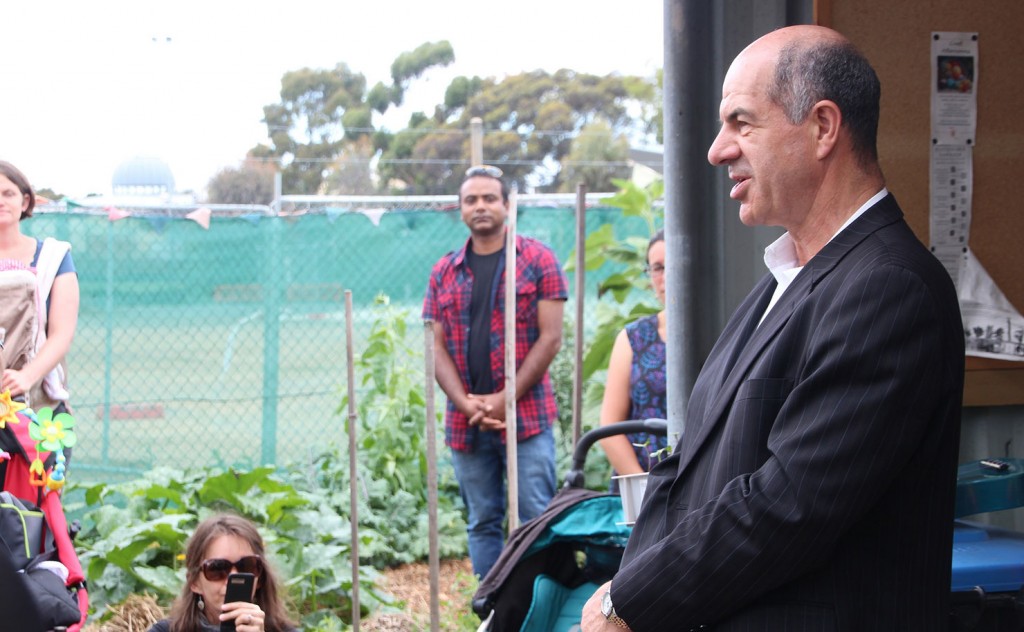One of the worst movies I have ever seen was Titanic. I can only assume the movie was a bad joke played by a big producer, writes James Arvanitakis.
The movie does, however, have one redeeming and instructive scene: the one where people are huddled into the lifeboat and watch their fellow passengers drown. To save themselves, many have to push others away. This had to be done because, as we all know, if you try and save too many other people, your overloaded lifeboat will go down and sink. The Titanic passengers were forced to make an unimaginably difficult decision.
It is a scene that resonated with me because I have always wondered what I would do in a similar situation — that is, if the women and children first rule no longer applies. Would I push people off or would I try and save them? Would I risk my own life for the sake of others or would I take the position that any attempts to do so would be futile — so just hang on folks.
Hanging on for dear life while pushing others away is best described as a “lifeboat mentality”. In teaching students, I challenge them to reflect on how far their own “lifeboat mentality” extends: at what point should we push others away to save ourselves?
It is a hard question, and one that has particular significance in our contemporary world when we start reflecting on the population size of Australia, and on the linked question of migrants and refugees.
Over the last few years, the issue of the correct population for Australia has been prominent in the media and has been taken up by many high profile Australians. It is a discussion that sits within the broader theme of a global “population explosion” — driven by a fear that the third world populations are over-breeding and consequently, over-consuming.
It is a discussion often framed by environmental imperatives: we are told that to save our environment we have to limit numbers.
This is a position that has been taken by an increasing number of environmental campaigners: people I both like and respect. It is a position, however, that plays into the lifeboat mentality that I described above and reflects the position of those whose anti-immigration stance is much more sinister.
Australia has a long history of exclusion — it is often based around the fear that outsiders will overwhelm us. It has mostly been a cultural fear and its most famous modern exponent, Pauline Hanson, warned us in her maiden speech that Asians were overrunning us.

More recently, former Prime Minister John Howard warned that multiculturalism had gone too far and that our Australian culture was under threat.
Since the terrorist attacks in New York and Bali, anti-immigration policy in Australia has often been presented in a security frame: giving rise to the somewhat ludicrous misconception that every person that arrives here via a leaky boat is a potential terrorist.
This was taken to some sort of comic nth degree when Tony Abbott promised to protect Australia’s borders by setting up a “boat phone” to allow him to personally decide which boats are allowed in and which ones are out. This gave rise to an image of Tony Abbott as Julius Caesar in his toga – with his thumbs pointing either up or down depending on his mood or the mood of the crowds in the Coliseum.
Now the third wave of anti-immigration sentiment in Australia seems to have taken on a green tinge: a position that uses the environment as an excuse to exclude outsiders. As brutal as it is to say this, what we’re seeing is is a greening of xenophobia. This time around, it indicates that it is the outsiders that will come here are the ones who will use all the resources while us, Australians, get on with the job of protecting the environment.
ALP backbencher Kelvin Thomson, who blames overpopulation for almost all of the world’s ills, best summed this up this position. His views are echoed by others who use the environmental message to promote a sense of exclusion.

In so doing, two of our fundamental challenges, climate change and racism, are brought together. The way that the debate is framed blames environmental destruction on the world’s poorest — and lets our own consumption patterns off the hook.
It is not the Bangladeshi or Iraqi populations that are responsible for the world’s environmental problems but first world consumption patterns. Such patterns are detrimental to the environment in all sorts of ways: from our thirst for oil to the production patterns that prioritise flowers over food production in places such as Bolivia. We are the ones who have been responsible for cutting down the trees for the furniture in our homes and we have promoted a dependency on oil. It is our own consumption patterns that give life to the drug wars in Colombia and put mines volatile zones giving rise to conflict and environmental devastation.
In spite of all this, we continue to point the finger at the third world farmers who cut down trees to feed their families — and go on and on about the environmental threat posed by every new wave of migrants.
Donate To New Matilda
New Matilda is a small, independent media outlet. We survive through reader contributions, and never losing a lawsuit. If you got something from this article, giving something back helps us to continue speaking truth to power. Every little bit counts.





